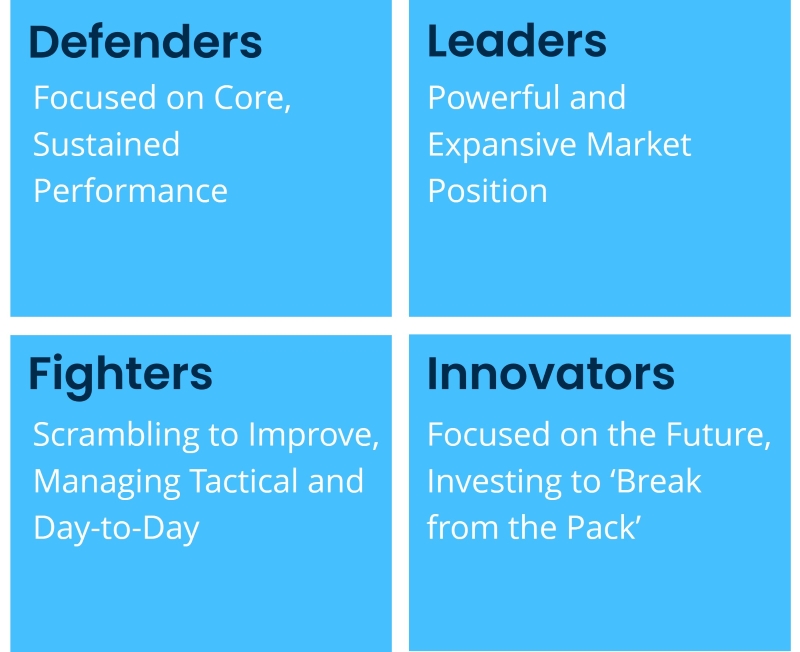Key Strike Considerations For Automotive Suppliers
This article was originally published on Law360 on September 13, 2023.
The International Union, United Automobile, Aerospace and Agricultural Implement Workers of America, better known as the UAW, and Detroit's Big Three — General Motors Co., Ford Motor Co. and Stellantis NV — have opened labor contract negotiations for the first time since 2019.
Labor contracts for nearly 150,000 employees across the Big Three who are represented by the UAW expire on Sept. 14. The UAW's contract demands, when combined with recently elected UAW President Shawn Fain's promise for a "militant" approach to negotiations, lend themselves to the strong likelihood of a strike.
With a strike fund of $825 million, the UAW is capable of supporting a prolonged strike against any of the Big Three, or a combination thereof. There is no historical precedent for a concurrent strike against all of the Big Three, and the potential economic impact could be devastating.
A recent report from the Anderson Economic Group estimated a 10-day shutdown of the Big Three would result in a total economic loss of more than $5 billion, including lost wages for workers and profits for automakers, dealerships and vehicle service providers.
Possible Strike Scenarios
While the UAW has not ruled out a simultaneous strike, it is not short on options for how a strike could be conducted.
Single Big Three Target
Historically, the UAW selects one target company to negotiate with — typically the automaker it believes will agree to the best terms — to set a pattern for the other two. If a deal is not met by the contract deadline, the UAW will often strike the target company.
The 2019 contract negotiations followed this pattern and resulted in a 40-day strike of GM, which cost the automaker nearly $3.6 billion. At the time of this article's publication, the UAW had not yet selected a target.
A Target Higher on the Supply Chain
In 1998, the UAW conducted an "asymmetric" strike on two key component plants for GM. The strikes were smaller in scale, based on what the UAW was required to fund — only 9,200 employees received strike pay — but achieved a significant impact.
Nearly 30 other GM assembly plants and 100 parts plants across the country were shut down. Additionally, more than 193,000 hourly GM workers were laid off, with nonstriking UAW members collecting unemployment.
The smaller scale of the strike targets meant the UAW was able to fund a longer strike that ultimately cost GM $2 billion.
Possible Unifor Involvement
Current contract bargaining is not limited to the UAW for Detroit's Big Three. Unifor, which represents the Big Three's approximately 18,000 laborers in Canada, has also indicated support for a strike.
It is the first time since 1999 that the UAW's and Unifor's contracts with the Big Three are set to expire simultaneously, and it presents an opportunity for an exponentially tougher economic impact.
The impact of a strike by the UAW, and possibly Unifor, would likely be most devastating for auto suppliers, which supply the component parts necessary for carmakers to assemble vehicles. The UAW's 2019 strike of GM had a significant impact on many large suppliers:
- Lear Corp. estimated the strike caused a nearly $86 million negative impact on its fourth-quarter net income, a 41% decline;
- American Axle & Manufacturing Inc. estimated a revenue loss of approximately $243 million; and
- Aptiv Solutions Inc. estimated a revenue loss of approximately $200 million.
Coming on the heels of the impacts of COVID-19, including supply chain disruptions and significant inflation in many input costs, many auto suppliers currently lack the balance sheet strength to absorb a lengthy strike.
Automotive Supplier Landscape
Alvarez & Marsal's Automotive and Industrials Group recently compiled a list of automotive suppliers and categorized them as leaders, defenders, innovators and fighters.
The major differentiators between these categories are relative comparisons of operational and financial health indices, such as product and regional diversity, cash flow, and financial security — all of which will play a factor in the potential showdown between the UAW and the Big Three.
In the accompanying matrix, operational factors are arranged on the x-axis and financial metrics are on the y-axis:

The leaders are likely the most resilient and best able to weather a storm such as a labor strike at the Big Three. These companies are characterized by product, industry, customer and regional diversification, and strong financial health.
Defenders are potentially equipped to weather a short strike due to, typically, being smaller and having strong financial health. Unfortunately, these companies are defined by only a few products in one industry — automotive, in this case — and have fewer options to fall back on if automotive volumes shrink or go away as a result of a strike.
Perhaps the suppliers most at risk are fighters and innovators. Innovators, similar to leaders, have strong product and regional diversification; however, these companies are weaker financially, which reduces their ability to absorb a strike.
The fighters are in the worst position to weather this storm. These companies are focused on day-to-day operations — and when those operations cease, for whatever reason, their options are typically limited and drastic.
Decisions and Actions
All auto suppliers, regardless of size, will face a number of legal and operational issues if there is a strike. Auto suppliers should already be developing action plans that can be quickly executed in the event of a UAW labor strike.
The following are critical areas for consideration.
Contracts
While a strike may be limited to one or more of the Big Three, most auto suppliers have a variety of automakers as customers. Reduced volumes with the Big Three may affect a supplier's ability to produce and ship parts to its other customers, which may then result in claims by an automaker against the auto supplier.
Suppliers should analyze their contracts with each of their customers, to understand the nature of each contract, and the conditions under which an obligation to ship arises.
The Michigan Supreme Court's July ruling in MSSC Inc. v. AirBoss Flexible Products Co. — which asserted that "a blanket purchase order issued by a customer that relies on subsequent releases does not constitute a requirements contract and, therefore, a supplier does not have to accept the releases" — may provide a defense if a supplier is not able to ship to its other customers.
Additionally, while applicable contractual language will take control in the absence of a directly applicable clause, an auto supplier may have a colorable claim with respect to its raw material suppliers and customers under the doctrine of frustration of purpose.
Factual questions will include whether a UAW strike was reasonably foreseeable and whether the supplier assumed the risk when accepting the original equipment manufacturer's releases for component parts or purchases of raw materials. Counsel to these automotive suppliers can assist their clients when discussing potential UAW strike operation scenarios.
Liquidity
Suppliers should be doing everything they can to preserve cash in anticipation of a UAW strike. Certain expense reduction activities — e.g., furloughs, layoffs, 401(k) and other benefit adjustments, CAPEX delays, and inventory reductions — may have a longer lead time, notice requirements or legal constraints on what can be done.
Counsel should be actively involved in helping suppliers understand their governing documents, as well as any regulatory considerations that must be regarded, when planning expense reduction and cash preservation activities.
Compliance With Covenants in Credit Agreements
Suppliers should develop business plan scenarios to understand conditions under which there may be violations of covenants within credit agreements, and whether they may have an impact on the ability to borrow under existing facilities.
They also need to explore whether there is a need to obtain new facilities to assist with short-term liquidity issues.
Inability to Meet Purchasing Commitments or Obligations
As discussed in our review of considerations regarding contractual obligations above, suppliers should work closely with counsel to understand key terms of contracts with customers and suppliers — including whether a UAW strike can be considered a force majeure event.
Demands for Adequate Assurance of Future Performance
Suppliers should take steps to understand the financial health of their own raw material and component part vendors in the event of UAW strike.
Even if a supplier does not have direct exposure to the Big Three, its raw material and component suppliers may have direct relationships with them that may still affect delivery capabilities.
Material Adverse Change and Material Adverse Event Clauses in Stock or Asset Purchase Agreements
Suppliers should assess and work closely with counsel on what disclosures may be required if there is a sale or purchase transaction in process.
Ability to Ramp Up Quickly After a Strike
Finally, once production resumes after a strike, auto suppliers need to evaluate whether they can accommodate the restart, and quickly ramp up back to normal vehicle production. Certain tactical considerations should be made when giving notice to automakers if there are issues with the supplier's ability to meet demand.
Conclusion
The UAW's negotiation with Detroit's Big Three is the latest in a series of intensely negotiated labor contracts in the last 12 months, and UAW leadership is likely emboldened by the success other labor unions have achieved.
Hard-line negotiations and strikes — both threatened and actioned — have led to relative victories for the International Brotherhood of Teamsters, the International Longshore and Warehouse Union, and the Allied Pilots Association.
The pilots' agreements with Delta Air Lines Inc. in March and American Airlines Group Inc. in August cannot be ignored, with immediate pay increases of more than 18% and 20%, and total increases in excess of 34% and 46% by 2027, for Delta and American, respectively.
United Airlines Holdings Inc. has a similar tentative agreement with the Air Line Pilots Association International, pending ratification.
Given the potential economic impact of a UAW strike against the Big Three, federal government intervention cannot be ruled out. In December 2022, President Joe Biden signed legislation blocking a national railroad strike that could have otherwise led to an economic catastrophe.
Whatever the outcome of negotiations, strategic preparation is critical for automotive suppliers to minimize damage and best position themselves for survival.
Alvarez & Marsal Managing Director Brian Irwin and Director William Hagan contributed to this article.



